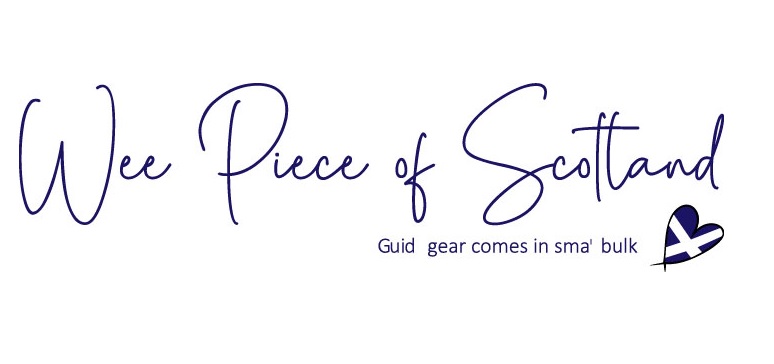View basket “Shetland Peat” has been added to your basket.
Showing 1–18 of 20 results
-
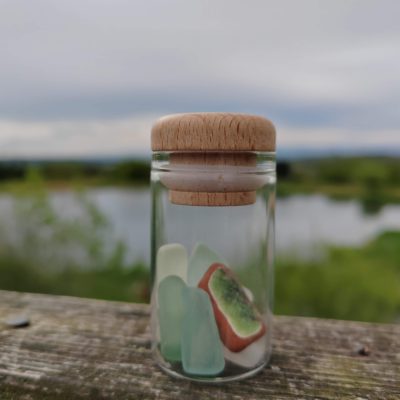
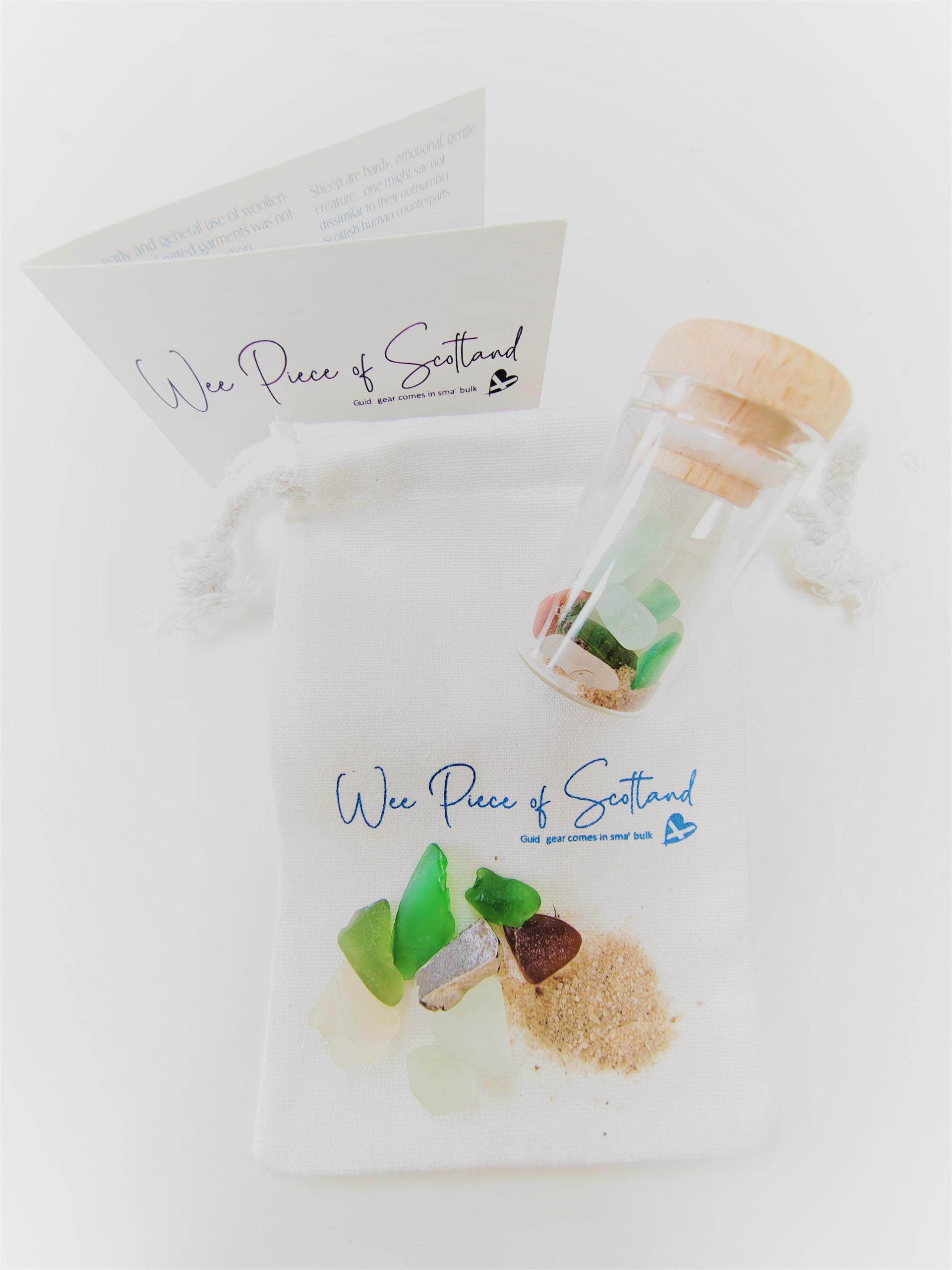
£15.00
With it’s 11,602 miles (18,672 km) of coastline, accessing Scotland’s stunning beaches, where the ice cold waters meet the roaming land, is never far out of reach. From popular family-friendly tourist spots with their spectacular shores to remote hidden coastal gems with their nooks and crannies offering peaceful isolation. Scotland’s beaches provide many vastly different coastal pictures, yet all are wonderfully evocative in their own rights. From stunning silver sands and crystal clear turquoise water to pebble, driftwood and sea-glass stroon shores with their crashing waves, Scotland’s beaches offer a haven of treasures to help you while away the hours and blow the cobwebs away.
-
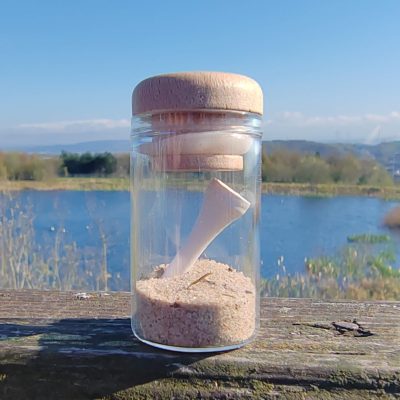
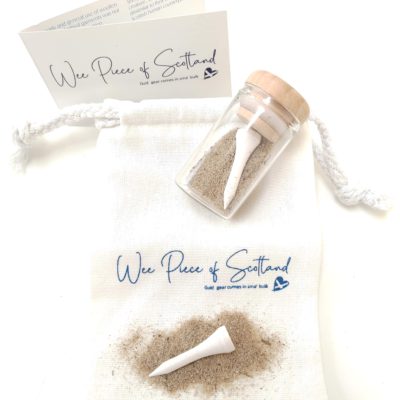
£15.00
Originating on the East coast of Scotland, early golfers hit pebbles over sand dunes. These sandy hazards to any golfers game were initially a purely organic landscape feature, created by animals. Over time Bunkers were incorporated and evolved to be the dreaded feature in all golf courses throughout the world.
-
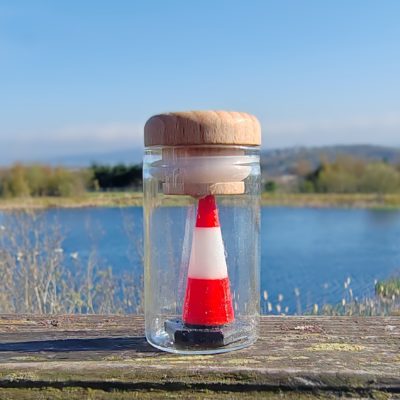
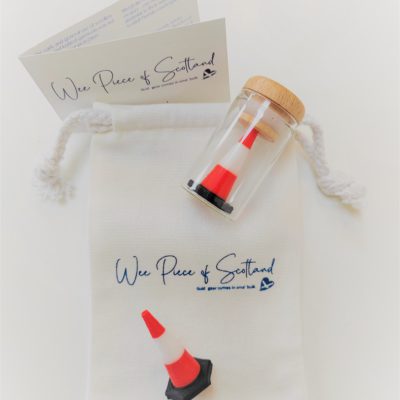
£15.00
An unusual but light hearted addition to your Wee Piece of Scotland collection. Scottish people, have their one of a kind sense of humour. Edinburgh has the Castle and Glasgow has a statue with a traffic cone on its head directly outside the Gallery of Modern Art. For over 140 years the statue of the Duke of Wellingstone was just another statue. Until one evening in 1980’s, a traffic cone mysteriously appeared on top of his head. Despite continuous efforts to remove the cone by the local Council, the cone has remained in place for over 30 years. If the cone is removed it’s only a matter of days until a new one appears.
-
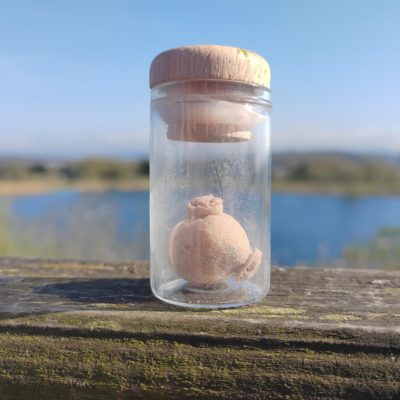
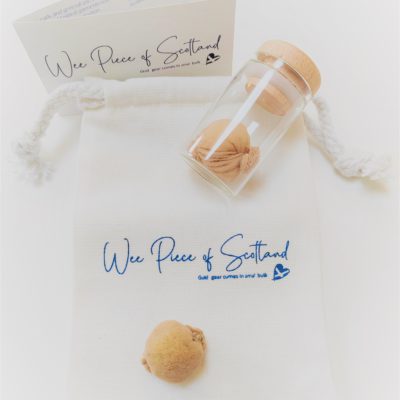
£15.00
With it’s origin’s shrouded in mystery and its infamous association with Rabbie Burns, couple with the folklore of wild hairy rodent like creatures, with it’s mismatched legs scuttling across the hills in one direction…Haggis is one of Scotland classic symbols. In reality, this rudimental yet practical way of utilising sheep offal the content and casing of haggis may not be everyone’s first culinary choice. If the thought of eating the original Haggis recipe leaves you feeling a bit ‘peely-wally’, the vegetarian variety is a delicious and possibly less formidable gastronomic option, together with Haggis crisps or ice cream. Alternatively yo could always give ‘Haggis Hurling’ a go!!
-
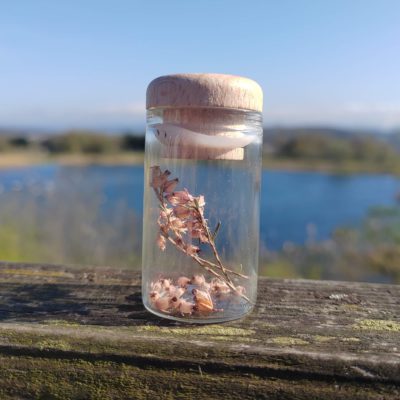
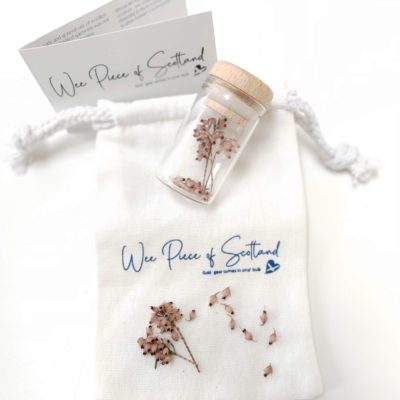
£15.00
Growing freely be it high up on the moorlands or down to the sea cliffs, heather is a sturdy wee ever green tree whose delicate flowers bloom twice a year where the delicate purple flower love to dance in the wind. ‘Haeddre’, ‘Heddir’ or ‘Hathar’ as it was called in times gone casts a glorious purple hue as far as the eye can see. Not just a pretty face on the landscape heather is used in medicines, teas, roof thatching, honey production,scents, jewellery, beers and so much more. Plain and simply put, the much loved heather is ‘Braw’ (excellent)
-
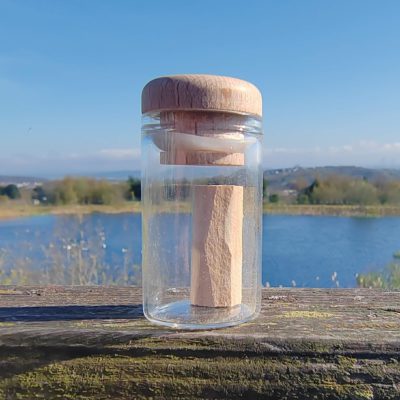
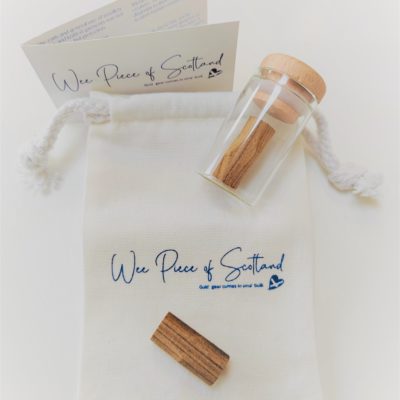
£15.00
The term ‘Caber’ derives from the Gaelic word cabar. It is thought the caber toss originated in the Scottish highlands, where large tree beams were tossed across ice-cold streams to provide a temporary bridge. The sport of caber tossing evolved to be a favourite event of the Highland Games held across Scotland. In Scotland, the caber was typically made Larch tree or other softwood trunks. It measures an impressive 16-20 feet and can weigh a staggering 90-150 pounds. From times gone by, to the present day, the caber toss is a test of strength, endurance, skill, ingenuity, determination and friendly gamesmanship.
-
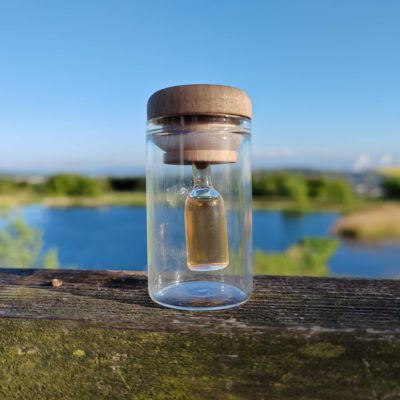
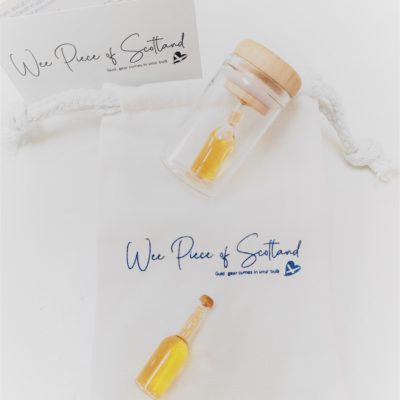
£15.00
From AG Barr ..
Launched in 1901 in Scotland, IRN-BRU is a carbonated soft drink made to an original secret recipe, which contains 32 flavours.
In 1901, steel workers working on the re-building of Glasgow Central Station were drinking too much beer to quench their thirst. So, a local soft drinks manufacturer named AG Barr brought to them a tonic-like drink that could get the workers through a hard day’s graft. ‘Iron Bru’ was born and a long history of it getting Scots through tough situations began. Details taken from AG Barrs website
-
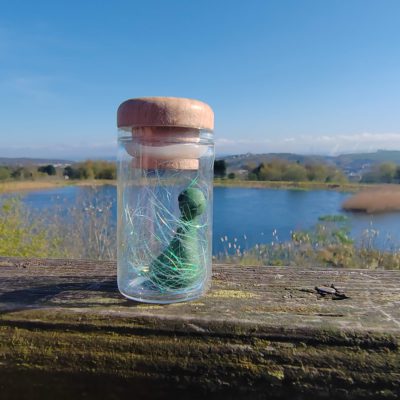
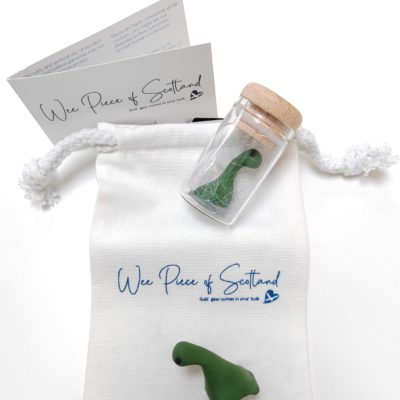
£15.00
The infamous Loch Ness Monster or Nessie is without a doubt one of Scotland’s most mystical and loved folklore tales. Sighting of this large, long-necked, prehistoric loch dweller protruding from the water have been recorded since 565 AD, where the fearsome creature attempted to gulp down a local farmer. In World War II, German fighters dropped bombs in Loch Ness in an attempt to destroy the creature. Although, conclusive proof of the existence of this elusive animal has not yet been found, expeditions using sonar technology detected large, moving underwater objects that could not explain. Whether you are a believer or not, no one can deny Nessie captures a level of intrigue and imagination which is unsurpassable.
-
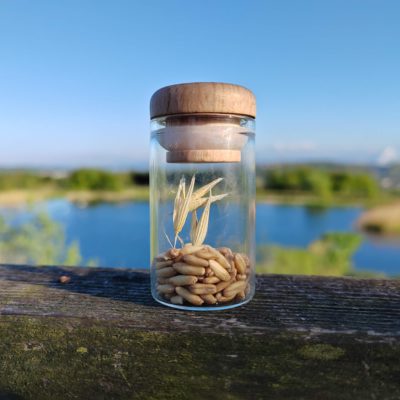
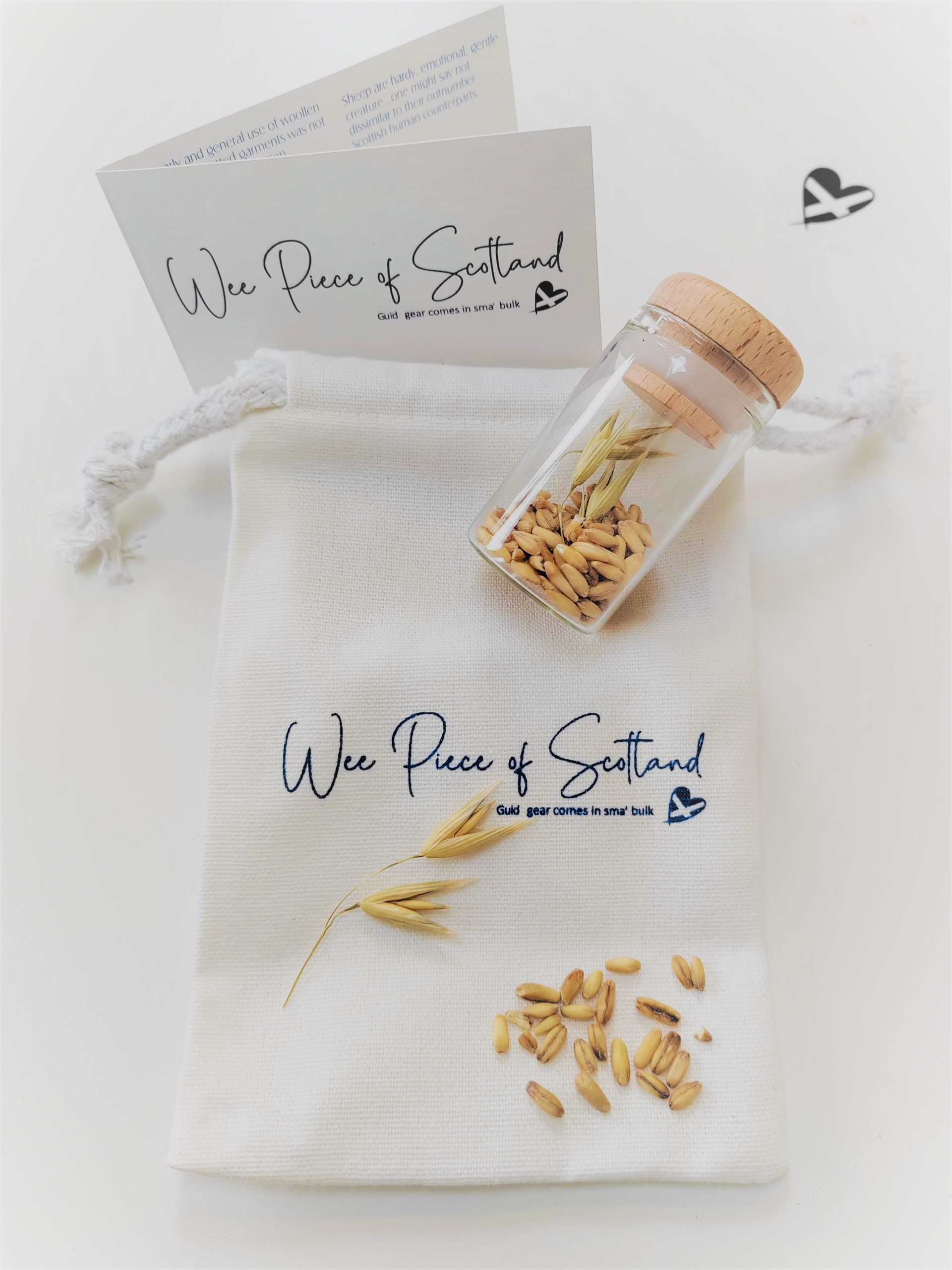
£15.00
Scottish oats are whole oat groats which have been simply harvested in August, cleaned and the oat berry removed from its inedible outer husk. Scottish oat groats are not steamed, rolled or cut like other types of oats, but rather ground.
Oat Groats remain the healthiest way to enjoy oats in your diet because they’re the purest form of the whole oat you can eat. Oat groats can be used in breakfast bowls, mixed with fresh fruits and sweet spreads, added to salads, or savoury dishes, but it’s fair to say the humble bowl of Porridge is what we picture first when talking about Scottish oats.
Scottish parritch (porridge) is synonymous with our country and has been for many a century. Since late medieval times oats have been part of the Scot’s staple diet.
With its many traditions and superstitions Scottish porridge should be made stirred with a wooden stick (known a Spurtle). In times gone by oat groats would be made into porridge cooked up in a big pot, stirred with a spurtle then poured into ‘drawers’ and allowed to cool, then sliced so it could be eaten throughout the day. It could be said it was the Scots who invented the first ever take away meal! If you disagree ‘save yer breath tae cool yer parritch’ (hold your tongue or simply say nothing)
-
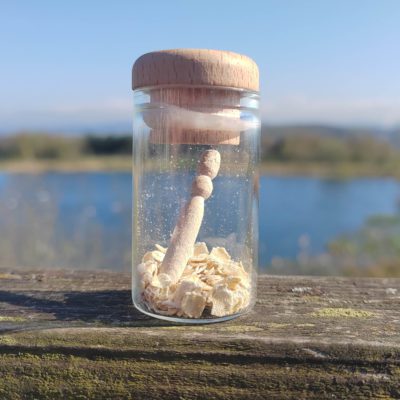
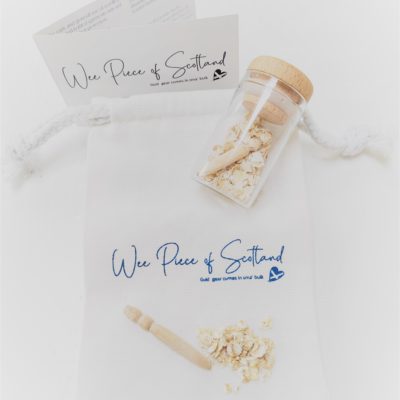
£15.00
This wooden stirring stick, dating back to the early 1500’s, is a kitchen utensil must have for all porridge lovers. It’s design makes it easy to handle for continuous stirring, and it’s cylindrical shape, allows the oats to be stirred without a dragging effect, which helps avoid the porridge from congealing and becoming unappetising. No one wants to eat lumpy porridge!!!! Each year, in a small village in Scotland, porridge makers compete to become the “World Porridge Making Champion” and to win the coveted ‘Golden Spurtle’ trophy. There are many customs and myths surrounding this infamous wooden whisking wand, some made up by mischievous Scots folk over a roaring fire with a dram in hand. Be warned however, the most famous of the customs when using a Spurtle is you must always stir clockwise and always with your right hand….‘Least you invoke the devil’. The spurtle is certainly no ordinary stick!!!
-
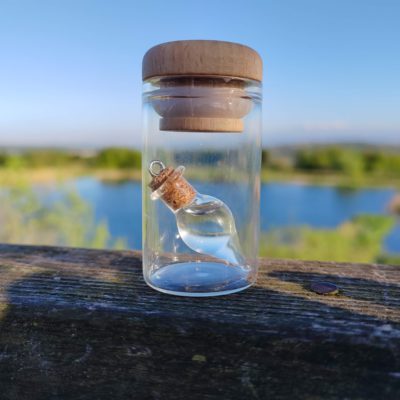
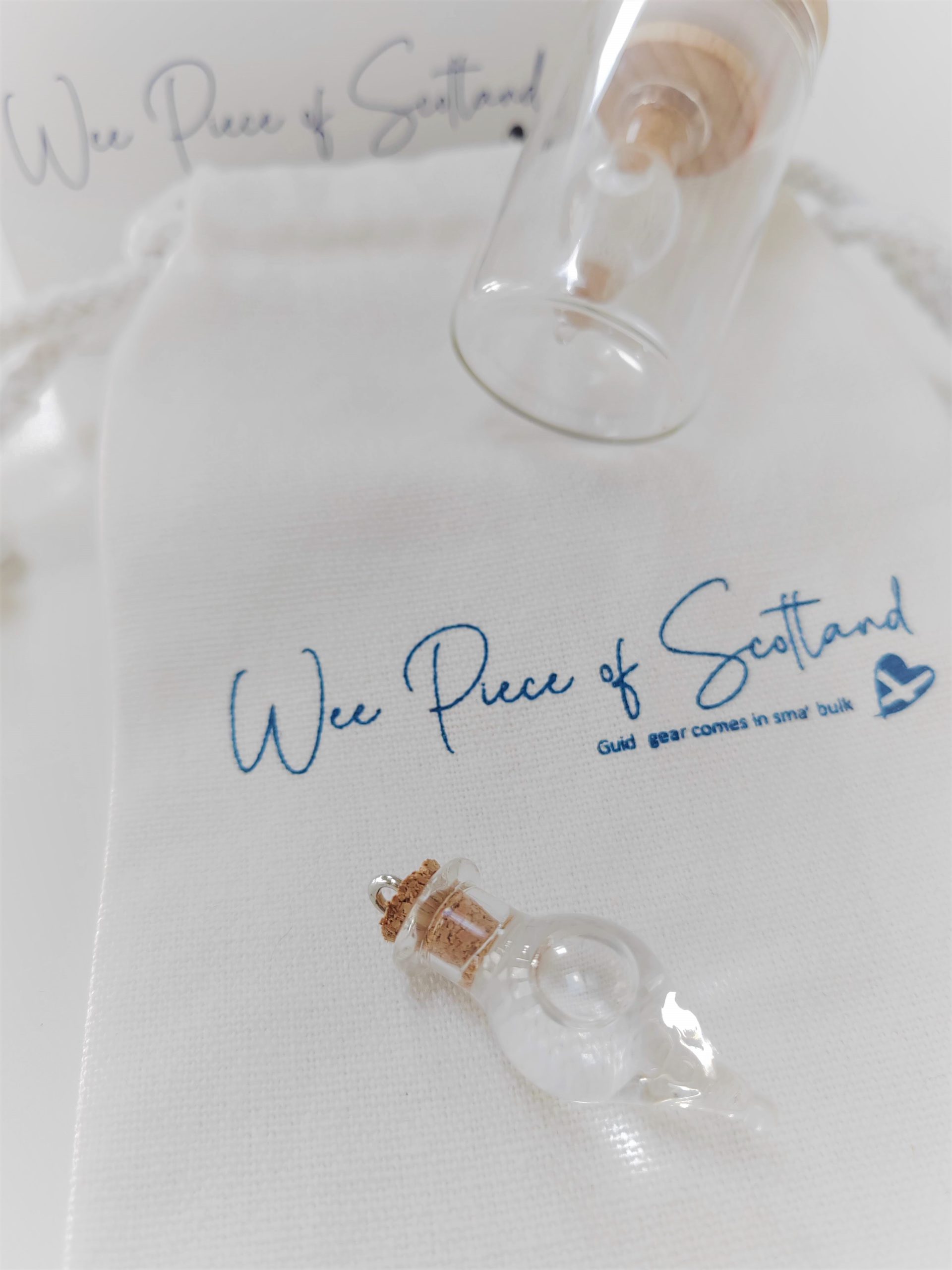
£15.00
As a country Scotland is very much so influenced by its climate. It’s infamous rain, bethat the horizontal version or a wee bit drizzle is what makes its landscape so lush and green. Our wet climate is what makes our rivers run fast and our waterfalls so spectacular. Scotland is predominantly surounded by the sea, therefore there is lots of water for the sun to evaporate which is why it’s compabibly one of the worlds wetter countries. Although Scotland tends to be quite moderate and a little changeable its weathetr system is never considered extreme. You may exprience all four seasons in one day but be patient and the sun will shine. Althoguh a little wet at times as the old saying goes, “there is no such thing as bad weather, only bad clothing” and as the famous Billy Connoly said if “it wasn’t for your wellies where would be”. Looking on the bright side, the rainbows look spectacular against our mountaineous backdrops.
-
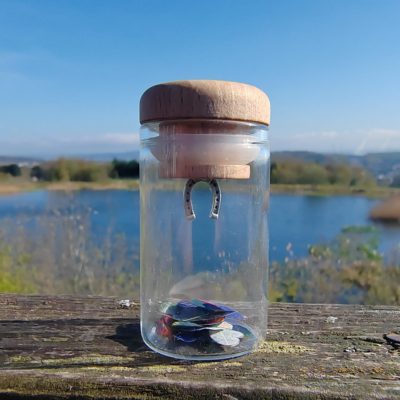
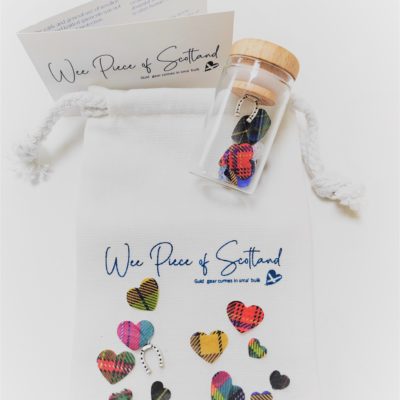
£15.00
Since the days of eloping to Gretna Green, Scotland has been synonymous with romance. Young couples slipping away together, crossing the Scottish border, where the convenient Blacksmith Shop offered the perfect wedding venue for love struck runaways. The hammering of the ‘Old Smithy’s’ anvil romantically signifies the forging of couples together in the heat of the moment, binding them together for eternity. With its historic romantic tales, together with a wealth of ancient castles, remote wilderness, dramatic landscapes and warm welcomes, Scotland truly does capture romance in its very own uniquely magical way.
-
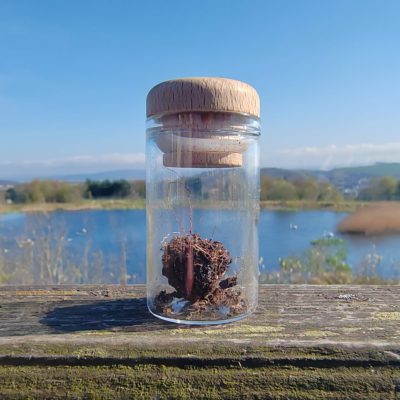
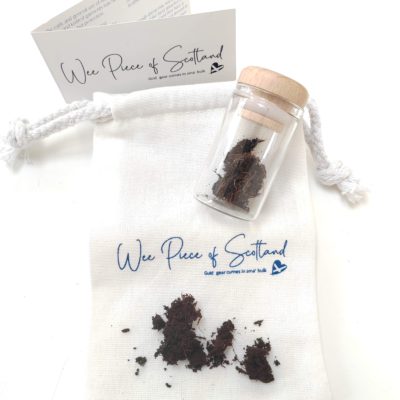
£15.00
Peat, may look less than exciting, but it’s worth it’s weight in gold. Formed from organic matter (mostly plant based)which has laid untouched for thousands of years in land water-logged from the melting glaciers of the Ice age, peat truly is a botanical timecapsule. Not only was Peat one of the most commonly used fuels many Scottish island dwellers used to heat their homes, it is also what gives some whiskey a smoky flavour and the reason behind why the water of Loch Ness is so very dark. Not only that…It’s an incredibly important natural ally in the fight against climate change. As 20% of Scotland’s land is peatland….it truly an often underrated ‘Gem of Scotland’
-
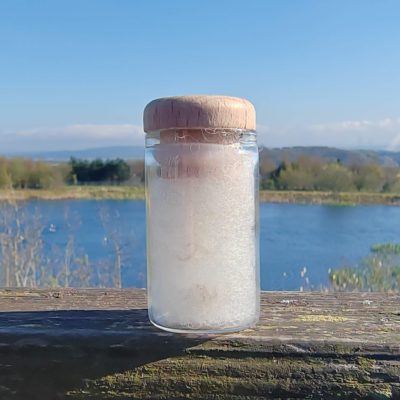
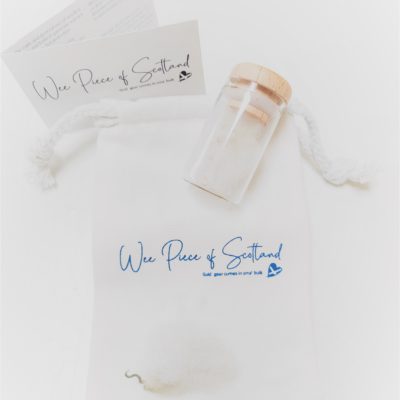
£15.00
In Scotland there are 6.6 million sheep and 5.3 million people at the last count (give or take). The most commonly found sheep is the blackfaced, with it’s course, tough wool. In Scotland the Ram (male) is called a Tup and the Ewe (female) is called a Girn. Sheep can be found grazing throughout Scotland , often in the highlands and islands these wooly walking clouds can be found strolling in front of cars on unfenced roads and giving you that look that says ‘Awa an bile yer heid’ (translating into ‘get lost’)
-
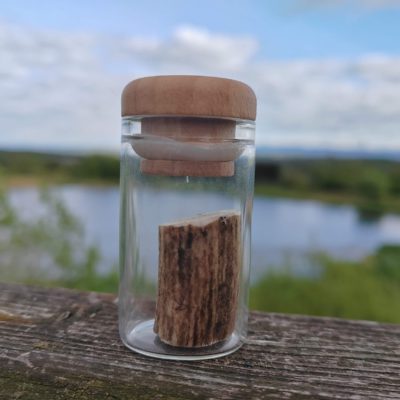
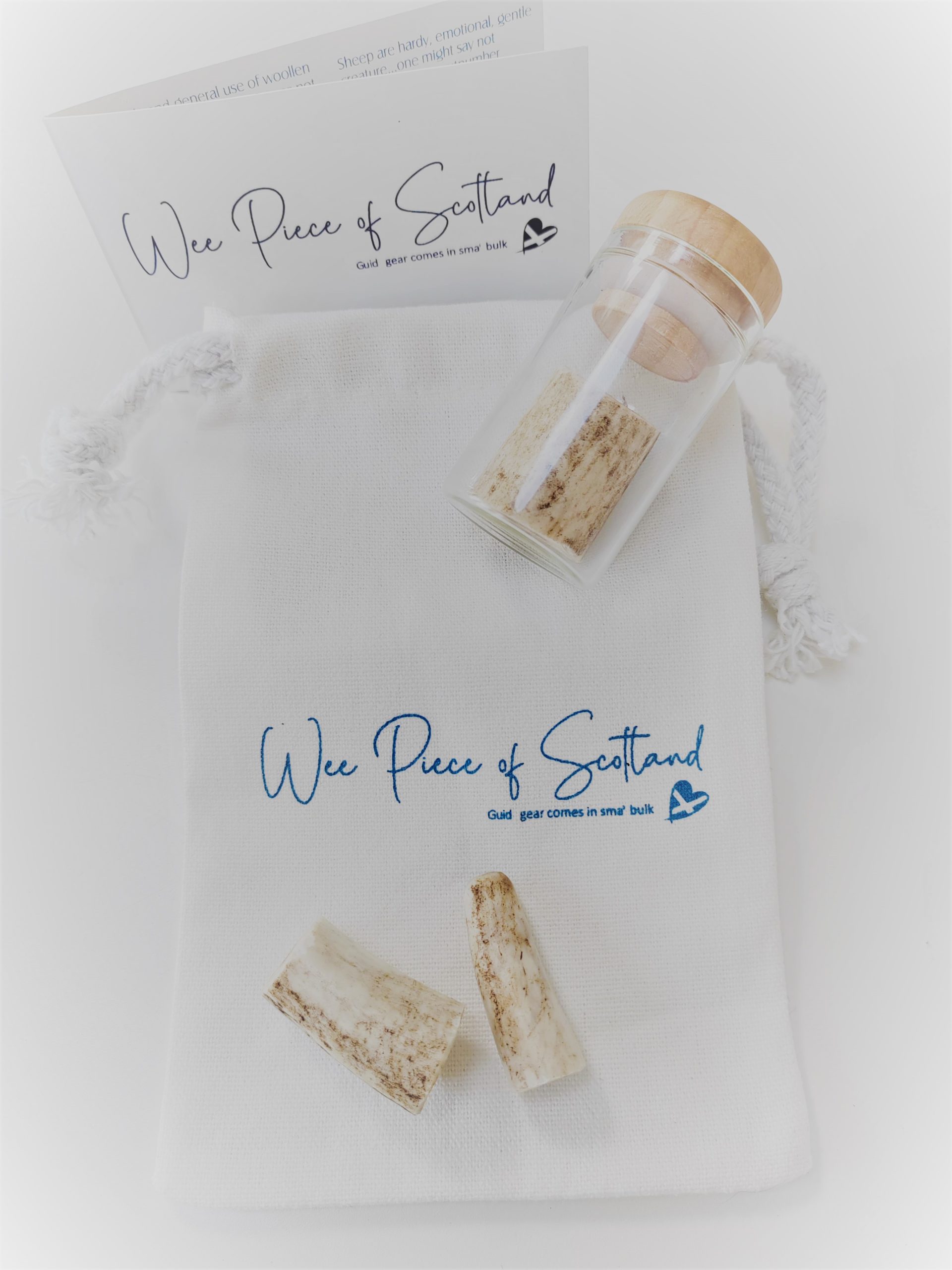
£15.00
The majestic stag standing proud and strong amounts the hills of Scotland is one of the most commonly associated symbols of Scotland. The mighty stag epitomises power, nobility, freedom and purity and for this reason is a popular motif found on many Scottish clan crests.
Averaging at an impressive 2metres tall the stage is one creature you don’t want to mess with. Although generally a docile and peaceful creatures, during the rutting season a stag with its monumental antlers will quiet happily show us humans who’s the boss.
Stage antlers are the fastest growing animal tissue known in the world and each year the stag grows antlers in the spring then naturally sheds them come winter. Making a day out ‘antler hunting’ a fun past time for the keen eyed rambler.
-
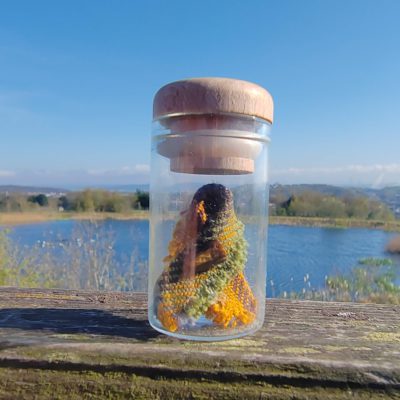
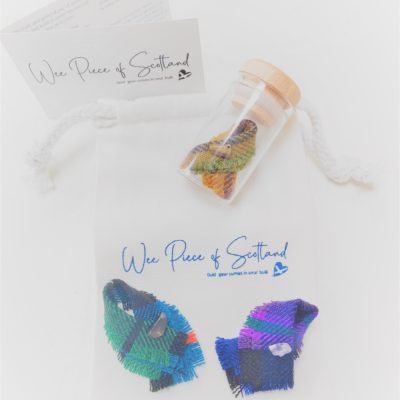
£15.00
Before we start..tartan and Plaid are not the same!! :) The criss cross patterned fabric known worldwide as ‘Plaid’ is only transforms into ‘Tartan’ when the plaid patterned fabric is associated to a particular name, a specific clan, family, or other community. Without this association the plaid is nothing more than a pretty patterned fabric, maybe used as a shawl or bedcover. Simply put…’No alliance, means, it’s No tartan!!’
-
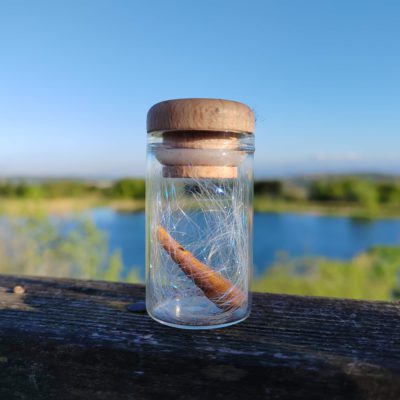
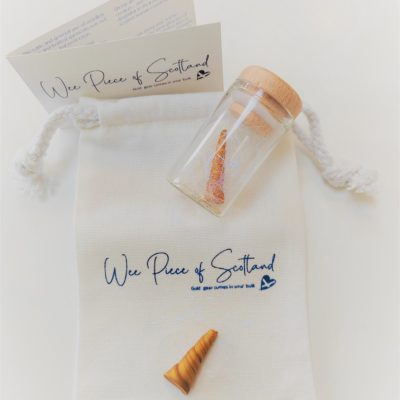
£15.00
It’s true: the unicorn really is the official national animal of Scotland.
This untameable, proud white horse-like creature with it’s golden spiralling horn is considered one of the most iconic symbols of Scotland. It even has it’s own national day on the 9th of April!! It’s a a fiercely independent beast notoriously difficult to seize and conquer. The unicorn, to the Scots, is a symbol of purity, innocence and power. Legend has it, such is the strength of the healing power held within their golden horn, the unicorn can purify even the most poisoned of waters.The unicorn was first used on the Scottish royal coat of arms in the 12th century. The perfect representation of the pride, strength and other-worldly qualtities that the Scots possessed to remain unconquered…or at the least remain that wee big magical and legendary.
-
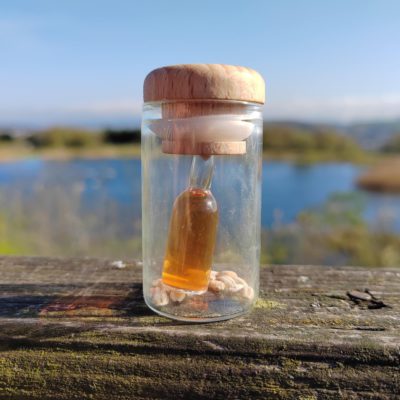
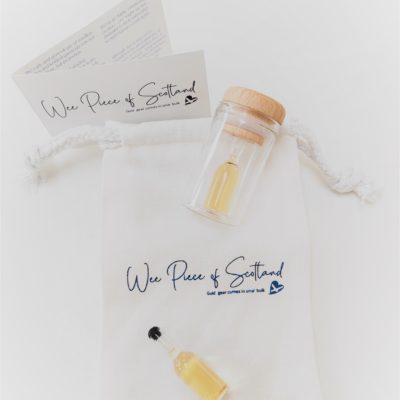
£15.00
Malt whisky, Scotch or as it’s more poetically know as ‘The Water of Life’ is one of Scotland’s proudest, pungent and popular crafted products. Beginning in the early 15th century, the distillation of Whisky, soon sparked interest from the government through tax collection. Robert Burns, not only was the famous Scottish Bard, but who was also a tax collectors of his day. wrote “Scotch Drink – an ode to whisky and the nature of happiness – of community, cooperation, warmth and a friendly welcome.” Capturing the true spirit of Scotland in his whiskey inspired words. The characteristics of every growing Scottish Malt Whisky family, with their deep, smoky, peaty aromas to their more delicate floral and fruit overtones are as captivating and varied as the Scot’s people who produce them.

